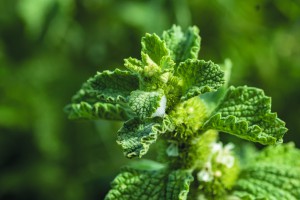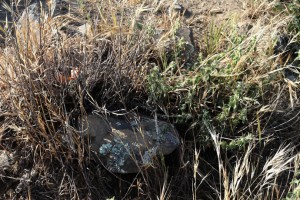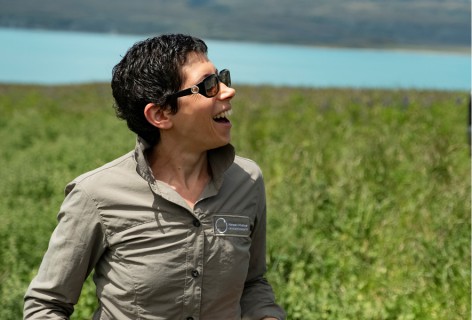Horehound plume moth
History in New Zealand
The horehound plume moth is native to Europe and was released in Australia as a biocontrol agent in the mid-1990s. Permission to release the plume moth was granted by the EPA in late 2018. It was imported from Australia into containment in New Zealand in 2018 by Manaaki Whenua – Landcare Research and released soon after. The plume moth together with a clearwing moth (Chamaesphecia mysiniformis) are beginning to noticeably reduce the vigour and density of horehound infestations in Australia. The clearwing moth was also released in New Zealand and is expected to complement the activity of the plume moth.
How would I find/recognise them and what is their lifecycle?
The adults are pale cream with fine dark marks on the wings. They are about 10 mm long, with a wingspan of 20 mm. The hind wings are divided into three feather-like plumes. Like other plume moths, the adults have a characteristic resting posture with the body and outreached wings forming a T-shape.

Image: horehound plume moth resting position. Photo credit (c) Donald Hobern CC-BY 4.0.

Image: horehound plume moth wing plumes. Photo credit (c) Donald Hobern CC-BY 4.0.
The bright green eggs are deposited singly on the underside of young leaves. Each female can oviposit around 100 eggs. Eggs hatch after about one week. The green hairy caterpillars mimic the colour and texture of horehound leaves. Early-instar caterpillars feed in the growing tips and are not easily visible. Late-instar caterpillars work their way down the shoot, defoliating the stem. The pupa is well camouflaged green to brown, usually found on the upper surface of lower leaves.

Image: horehound plume moth caterpillars.
The plume moth can have up to three generations per year. Each generation takes between 1-2 months to complete, depending on the environmental conditions. The first generation of adults emerge in spring, and the second and third generation in summer and autumn. Caterpillars of the autumn generation overwinter as early instars sheltered in leaf buds and continue their development when the weather warms up in spring. Late-instar caterpillars of this generation can be seen defoliating plants around late September and new spring adults may be seen in October-November. Establishment of the plume moth in New Zealand has now been confirmed. There are no other insects on horehound that could be confused with caterpillars of the plume moth.
How do they damage horehound?
Feeding in the growing tips of horehound by early instar caterpillars weakens the plants and reduces the number of flowers and seeds produced. Defoliation by advanced instars further weakens plants. At high densities, damage by the plume moth may limit horehound spread and density.
Will they attack other plants?
Horehound plume moths are highly host specific and are only expected to attack horehound (Marrubium vulgare) here. No other plants are expected to be at risk.
How effective are they?
It is too soon to know what impact the horehound plume moth will have in New Zealand but we would expect them to perform similarly to or better than in Australia. The moth does better where annual rainfall exceeds 450 mm, which applies to most of New Zealand’s horehound-infested regions, unlike in Australia, where the plant grows also in lower rainfall climates. In Australia, the moths have established at every site they were introduced into and have spread to sites many kilometres away from release sites. Anecdotal evidence suggests that the horehound plume moth and the horehound clearwing moth together provide satisfactory suppression of horehound in Australia, and no other agents are being pursued further.
How can I get the most out of this agent?
Since the plume moths have establish at initial release sites, it is worth helping to establish them in all areas where they are needed. The plume moth is considered a slow disperser, estimated to move only around 50 m per generation. Long-distance dispersal events by individual moths can occur, but their impact on establishing new populations will be limited in the first few years after introduction.
How do I select a release site?
Read Guidelines for selecting release sites for biocontrol agents.
How do I collect them for release at other sites?
When moths are present in good numbers, collect leaves with large caterpillars of the spring generation, in late September (at least 200). Transfer the leaves to the new site within 24 hours and sprinkle the leaves over new plants. The caterpillars will migrate from the drying leaves onto the fresh plants. Keep caterpillars at room temperature during transfer, refrigeration will damage them.
How do I manage the release sites?
Avoid any activities that will interfere with the plume moth, such as herbicide application. If you need to undertake control measures, then avoid the release site. Avoid grazing at the release site during winter. Grazing on horehound growing tips will kill the overwintering larvae.




